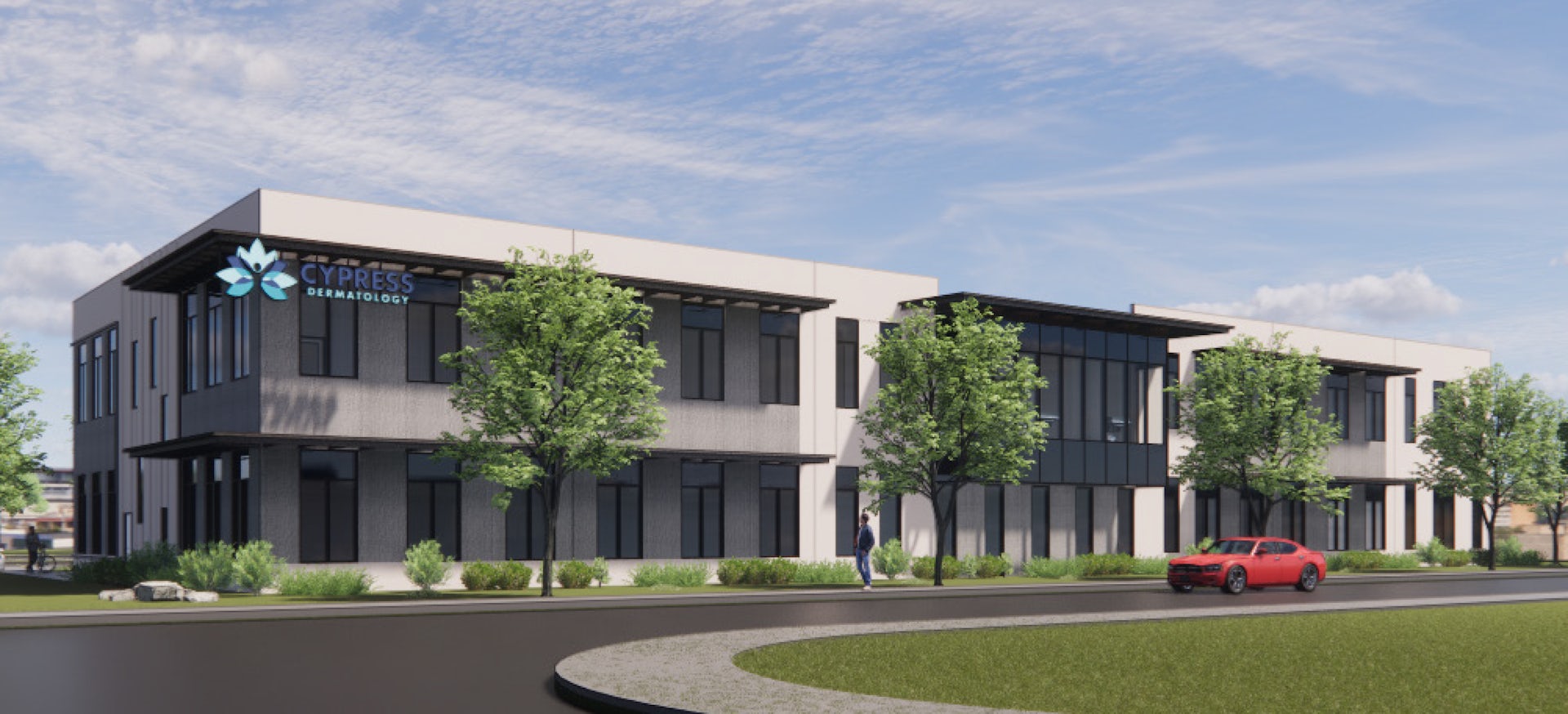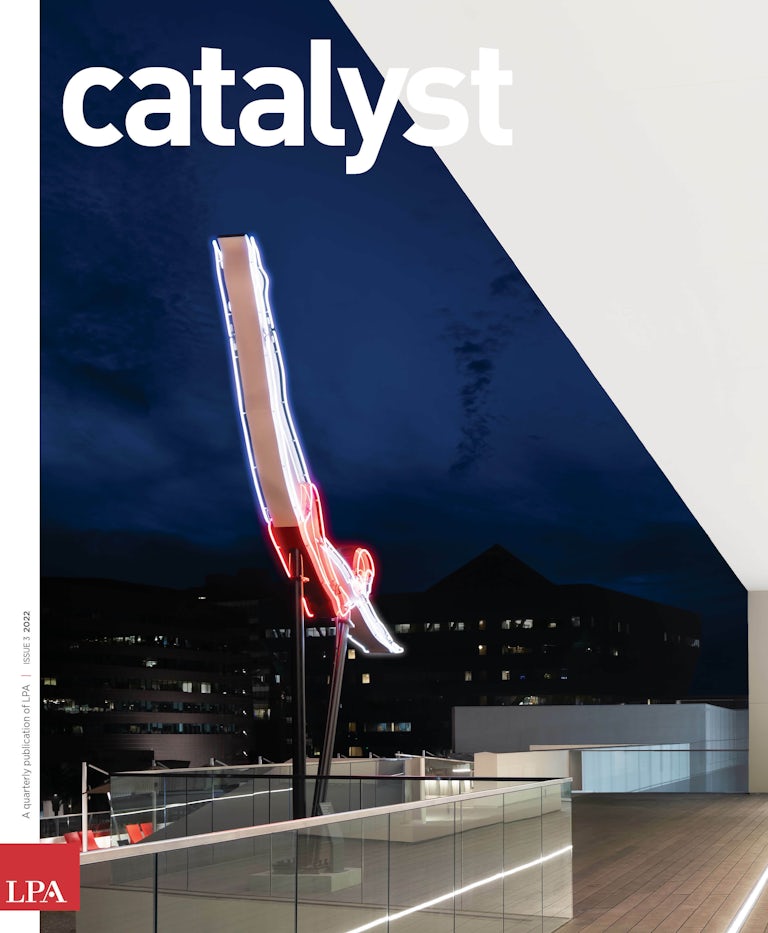A series of case studies illustrating cost-effective, sustainable design solutions that save materials, energy and water.
THE CLIENT:
A dermatologist in Cypress, Texas, with a limited budget wanted to build an efficient, two-story medical office building to house his business on the second floor and tenants on the ground level.
THE SOLUTION:
The design gets back to basics. In this 26,000-square-foot medical office building, tilt-up concrete construction was combined with careful design solutions. Tilt-up construction emerged as a popular construction method because of its ability to use fewer elements that each do more than one job. To leverage its strengths, the building envelope had to be carefully considered, says LPA Associate and project designer Federico Cavazos. “You pay for every corner in some way or another, so we limited the number of corners as a basic premise,” Cavazos says.
The concrete panels are 7¼ inches thick, the narrowest allowable for a two-story building in the area, optimizing material, labor and formwork costs. The designers employed a two-in-one insulation product; closed-cell spray foam serves as both a thermal layer and a weather barrier. The building plan and elevations were designed to allow the walls to be cast in place and tilted up, reducing construction time and the need for a separate casting slab. The panel widths were coordinated with local concrete subcontractors based on the capacity of their lifting cranes.

















